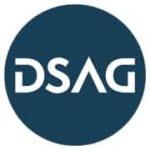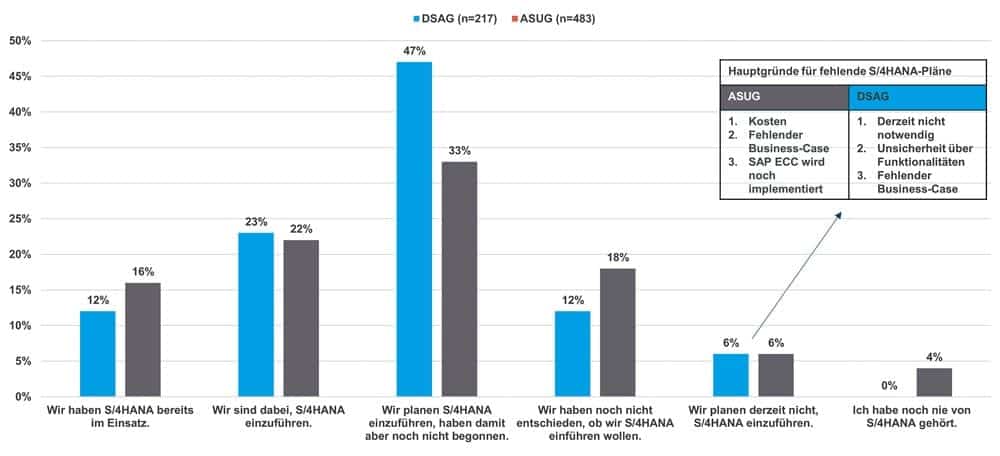S/4 Hana also picks up speed on the other side of the Atlantic
![[shutterstock.com: 1254279517, ChristianChan]](https://e3mag.com/wp-content/uploads/2020/08/shutterstock_1254279517.jpg)

According to this, the majority of DSAG members (70 percent) and ASUG members (55 percent) are already implementing S/4 Hana or plan to do so in the future (see chart). Twelve percent (DSAG) and 16 percent (ASUG) are already live.
Among ASUG members, the reasons why no S/4 Hana project has yet been implemented are the costs, the lack of a business case, and ongoing SAP ECC projects. Among DSAG members, the lack of necessity for a changeover, uncertainty regarding the functionalities, and in third place the lack of a business case dominate.
The most widely used solution among members of both SAP user groups is still SAP ECC, with 84 percent at DSAG and 78 percent at ASUG. But S/4 is on the rise everywhere. S/4 has a firm place in the planning of 69 percent of DSAG members and 57 percent of ASUG members. The results for SAP Fiori are also interesting.

Around half of ASUG members (57 percent) and DSAG members (47 percent) already use the user interface. Another 44 percent of DSAG members can imagine using it in the future, compared to 22 percent of ASUG members.
The greatest differences emerged when comparing the acquisitions of Concur, SuccessFactors and Ariba. While 58 percent of ASUG members already rely on Concur, only 17 percent of DSAG members do so. For SuccessFactors, 46 percent of ASUG members and 23 percent of DSAG members do so. And Ariba is already used by 32 percent of ASUG members, but only eleven percent of DSAG members.
This result is not surprising, since the solutions mentioned were all developed in the USA before SAP took them over. What is interesting in this context, however, is that only twelve percent of ASUG members who do not yet use SuccessFactors intend to look into the solution in the future, compared to more than twice as many in DSAG (30 percent).
When asked how SAP is assessed after an implementation project, the picture is quite uniform. For 13 percent of ASUG members, the perception of SAP has improved greatly as a result of S/4 Hana; for DSAG members, the figure is 14 percent. When asked how SAP can improve the customer experience, ASUG members rank support consistency and availability first, followed by more in-depth training and the desire for more training materials and a user-friendly experience.
DSAG members primarily want a better product experience, integration, and information and communication strategies from SAP. Respondents from both camps also want less customization effort.






